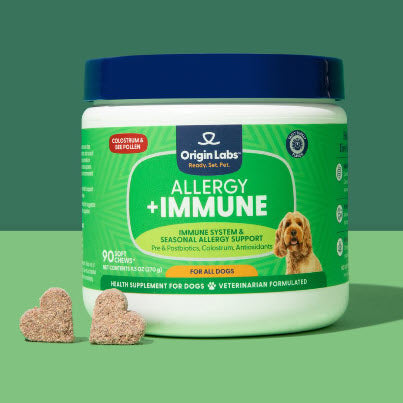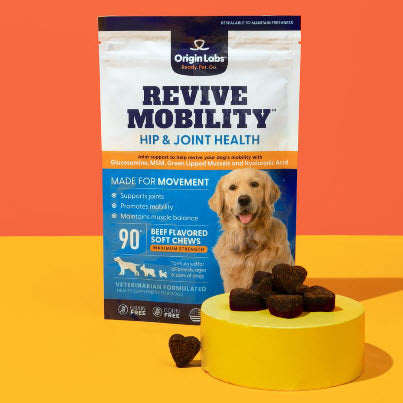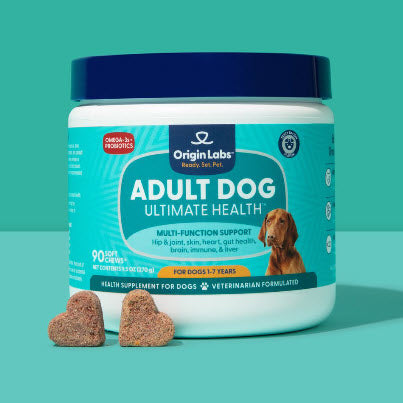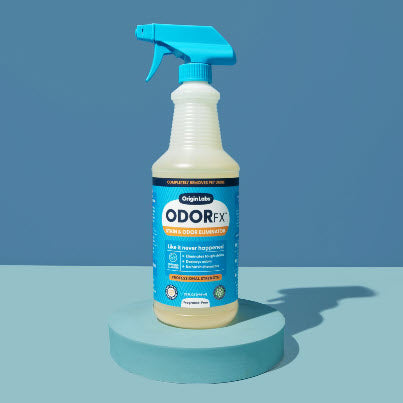Introduction
Dogs and human foods often stir curiosity among pet owners. One common question is: can dogs eat mayo?
Mayonnaise, a popular condiment made from eggs, oil, and vinegar, is frequently found in many households. Pet owners might wonder if it's safe for their furry friends to indulge in this creamy treat.
The truth about dogs and mayo is that plain mayonnaise, in moderation, is generally safe for dogs. However, there are important factors to consider:
- Moderation is key: Offering mayo as an occasional treat or flavor enhancer can be acceptable.
- Risks of flavored variants: Flavored or seasoned mayos containing harmful ingredients like garlic and onions should be avoided.
To ensure the best health for your canine companion, always monitor their diet closely and consult with a veterinarian if you have any concerns.
For those looking to support their dog's health at different life stages, you may want to consider Ultimate Health chews for senior dogs or Ultimate Health chews for puppies. These tailored chews provide support as your dog grows, with specific formulations designed for senior dogs and puppies respectively.
The Nutritional Value and Potential Risks of Mayo for Dogs
Mayonnaise is a widely-used condiment made from a few key ingredients:
- Eggs: Provide the base for mayo, giving it its creamy texture.
- Oil: Usually vegetable oil, this ingredient makes up the bulk of mayo's fat content.
- Vinegar or Lemon Juice: Adds acidity and acts as a preservative.
For humans, these ingredients combine to create a flavorful and versatile addition to many dishes.
Nutritional Content
Examining the nutritional profile of mayo reveals some important details:
- High-Fat Content: Mayo is predominantly made up of fats, contributing to its rich, creamy texture.
- Low Protein: While eggs are a source of protein, the amount present in mayo is relatively low.
- Calories: Due to its high-fat content, mayo is calorie-dense. A single tablespoon can contain around 90 calories.
Potential Benefits for Humans
Human diets can include mayo in moderation due to its:
- Flavor Enhancement: Adds richness to various dishes.
- Satiety: Fats can help make meals more filling.
However, these benefits don't directly translate to canine health.
Lack of Significant Nutritional Value for Dogs
For dogs, mayo offers little in terms of essential nutrients. Here are some reasons why:
- High-Calorie Content: Dogs have different caloric needs than humans. The high-calorie nature of mayo can lead to weight gain if consumed frequently.
- Lack of Essential Nutrients: Unlike specialized dog foods that provide balanced nutrition tailored to canine needs, mayo doesn't offer significant vitamins or minerals beneficial to dogs.
- Fat Overload: While fats are an essential part of a dog's diet, excessive consumption can lead to health issues such as pancreatitis.
Risks of Dogs Eating Mayo
Feeding mayo to dogs can pose several risks:
- Obesity: High-fat foods like mayo contribute to weight gain.
- Pancreatitis: This condition involves inflammation of the pancreas and can be triggered by fatty foods. Symptoms include vomiting and abdominal pain.
When considering whether to give your dog any human food, it's critical to evaluate both the potential benefits and risks. If you're looking for ways to enhance your dog's diet, consider exploring specially-formulated dog supplements that provide support tailored to canine needs.
Can Dogs Have Mayo? The Surprising Answer
Plain mayonnaise may be relatively safe for dogs in moderation, but flavored or seasoned variants present a different story. These variations often contain ingredients like garlic and onions, which are harmful to dogs.
The Dangers of Garlic Mayo for Dogs
Garlic is toxic to dogs. Even small amounts can lead to serious health issues. Garlic contains compounds called thiosulfates, which are harmless to humans but can cause oxidative damage to a dog's red blood cells. This leads to a condition known as hemolytic anemia. Symptoms include:
- Lethargy
- Weakness
- Vomiting
- Diarrhea
In severe cases, it can be life-threatening. Therefore, garlic mayo should be strictly avoided.
Onion Mayo: Equally Harmful
Onions are equally dangerous and share many of the same toxic properties as garlic. Onion consumption can also lead to hemolytic anemia in dogs. Onions contain compounds similar to those found in garlic that damage red blood cells. Symptoms of onion toxicity are similar and may include:
- Breathing difficulties
- Pale gums
- Loss of appetite
Even cooked or powdered onions retain their toxicity, making onion mayo just as unsafe.
Other Flavored Mayos
Aside from garlic and onion, other flavored mayos might contain additional harmful ingredients such as:
- Chives
- Mustard
- Certain spices and herbs
These components can cause various gastrointestinal issues and other health problems in dogs.
Hidden Ingredients
Many flavored mayos also contain additives, preservatives, and artificial flavorings that are not suitable for canine consumption. While humans enjoy the burst of flavors these elements provide, they add unnecessary risks for dogs.
Key Takeaways
To summarize the risks associated with flavored mayos:
- Garlic Mayo: Contains thiosulfates harmful to dogs, leading to hemolytic anemia.
- Onion Mayo: Shares similar toxic properties with garlic; avoid entirely.
- Other Flavored Variants: May contain various harmful ingredients like chives, mustard, or artificial additives.
- Hidden Ingredients: Preservatives and artificial flavorings pose additional risks.
When considering whether your dog can have mayo, stick to plain versions and avoid any flavored or seasoned types that could jeopardize their health. Always read ingredient labels carefully before offering any human food to your pet.
Moving forward, it's crucial to understand the importance of moderation when incorporating mayo into your dog's diet safely.
The Role of Moderation: Feeding Mayo to Your Dog Safely
Importance of Moderation
Feeding mayo to dogs safely involves a key principle: moderation. While plain mayonnaise is not toxic to dogs, it is crucial to offer it only as an occasional treat or a flavor enhancer rather than a regular part of their diet. Mayo is high in fat and calories, which can lead to weight gain and other health issues if consumed excessively.
Why moderation matters:
- High-fat content: Mayo's high-fat content can contribute to obesity and related health problems.
- Digestive issues: Too much mayo can upset your dog's stomach, causing diarrhea or vomiting.
Recommended Portion Sizes for Dogs
Portion sizes are crucial when feeding mayo to dogs. The amount should be tailored based on the size and breed of your dog.
Guidelines for portion sizes:
- Small breeds (under 20 lbs): A small dollop, roughly the size of a pea.
- Medium breeds (20-50 lbs): About half a teaspoon.
- Large breeds (over 50 lbs): Up to one teaspoon.
Using these guidelines helps ensure that your dog enjoys mayo without adverse effects. Always remember that any new food should be introduced gradually and in small amounts to monitor how your dog reacts.
Practical Tips
To make feeding mayo to dogs safely easier, consider these practical tips:
- Use it sparingly as a flavor enhancer mixed into their regular food.
- Avoid using mayo with added flavors or seasonings that might contain harmful ingredients like garlic or onions.
- Monitor your dog's reaction after introducing mayo into their diet.
By keeping portions small and being mindful of the ingredients, you can let your dog enjoy this occasional treat without compromising their health.
Alternatives to Mayo for Dogs' Diet and Health
Healthier Mayo Substitutes for Dogs
When looking for healthier alternatives to mayo for your dog's diet, there are several options that can provide nutritional benefits without the high-fat content. Here are a few dog-friendly choices:
1. Mashed Avocado
Avocado, in small amounts, is a nutritious option. It contains healthy fats, vitamins, and minerals beneficial for dogs. Ensure the avocado is ripe and avoid the pit and skin as they can be harmful.
2. Plain Yogurt
This is an excellent substitute due to its probiotic properties that support digestive health. Opt for unsweetened, plain yogurt to avoid added sugars and artificial sweeteners like xylitol, which are toxic to dogs.
Other Dog-Friendly Spreads and Dips
In addition to avocado and yogurt, there are other spreads and dips that can replace mayo in your dog's diet:
1. Peanut Butter
Known for its popularity among dogs, peanut butter is a tasty alternative. Choose natural peanut butter without added salt, sugar, or xylitol. It’s rich in protein and healthy fats but should still be given in moderation.
2. Pumpkin Puree
This fiber-rich option aids digestion and can be mixed with your dog’s regular food. Ensure to use plain pumpkin puree without any spices or additives.
3. Cottage Cheese
A good source of protein and calcium, cottage cheese can be a great occasional treat. Stick to low-fat versions to maintain a balanced diet.
Tips for Incorporating Alternatives
To smoothly transition from mayo to these healthier options in your dog's diet:
- Start by mixing small amounts of the alternative spread with their usual food.
- Observe how your dog reacts to the new ingredient over a few days.
- Gradually increase the amount if no adverse reactions occur.
These alternatives not only enhance the taste of your dog's meals but also contribute positively to their overall health. By choosing substitutes that offer nutritional benefits without unnecessary fats or harmful additives, you ensure your pet enjoys tasty treats while maintaining optimal well-being.
When Mayo Becomes a Serious Threat: Pancreatitis in Dogs
Pancreatitis is an inflammation of the pancreas, a vital organ responsible for producing enzymes that aid in digestion and hormones such as insulin. This condition can be acute or chronic and poses severe health risks to dogs.
The Link Between High-Fat Foods and Pancreatitis
High-fat foods like mayo significantly increase the risk of pancreatitis in dogs. Mayo's rich fat content can overwhelm a dog's digestive system, leading to inflammation of the pancreas. Even small amounts of high-fat foods can trigger this condition, especially in dogs predisposed to it.
Common Symptoms of Pancreatitis
It's crucial for dog owners to recognize the symptoms of pancreatitis early on. Some common signs include:
- Vomiting: Frequent episodes that do not improve
- Diarrhea: Often accompanied by a foul smell
- Abdominal Pain: Indicated by a hunched back or reluctance to move
- Loss of Appetite: Refusing food consistently
- Lethargy: Unusual tiredness or lack of energy
- Fever: Elevated body temperature
Importance of Immediate Veterinary Care
If you suspect your dog has pancreatitis, seeking immediate veterinary care is essential. Left untreated, pancreatitis can lead to severe complications such as organ failure or even death. A veterinarian will typically perform blood tests, ultrasounds, or other diagnostic imaging to confirm the diagnosis and determine the appropriate treatment plan.
Understanding the risks associated with high-fat foods like mayo helps ensure that you make informed decisions about your dog's diet. Always consult your veterinarian before introducing any new food items into your dog's meal plan.
Conclusion
Plain mayo is generally safe for dogs when given in moderation. However, it's important to be careful about how much and how often you give mayo to your furry friend. Mayo has a high fat content, so if your dog consumes too much of it, it can lead to health problems like pancreatitis.
Key Points to Remember:
- Moderation is Key: Only offer mayo as an occasional treat.
- Avoid Flavored Variants: Steer clear of any mayo containing harmful ingredients such as garlic or onions.
- Monitor Your Dog: Watch for any signs of adverse reactions or digestive issues.
Before introducing any new foods into your dog's diet, it's always best to consult with a veterinarian. They can give you personalized advice based on your dog's specific health needs and conditions.
Remember, when it comes to your dog's well-being, it's better to be safe than sorry.
FAQs (Frequently Asked Questions)
Can dogs safely consume mayo?
In moderation, plain mayo is generally safe for dogs but there are important factors to consider.
What are the nutritional value and potential risks of mayo for dogs?
Mayo contains ingredients like eggs, oil, and vinegar, and has a high-fat, low-protein composition. While it may have potential benefits for humans, it lacks significant nutritional value for dogs. There are also risks associated with dogs consuming mayo, such as potential effects on their health.
Can dogs have flavored mayo?
It is not recommended for dogs to consume flavored or seasoned mayo variants containing harmful ingredients like garlic and onions due to the associated risks.
How can mayo be fed to dogs safely?
It is important to offer mayo to dogs in moderation as an occasional treat or flavor enhancer in their meals. Additionally, recommended portion sizes of mayo for different sizes/breeds of dogs should be considered.
What are some alternatives to mayo for a dog's diet and health?
Healthier options that can serve as substitutes for mayo in a dog's diet include mashed avocado or plain yogurt. Other dog-friendly spreads and dips like peanut butter can also be considered.
What is the risk of pancreatitis in dogs from eating mayo?
Pancreatitis in dogs can be linked to the consumption of high-fat foods like mayo. It is important to be aware of common symptoms and seek immediate veterinary care if necessary.
Should I consult a veterinarian before including mayo in my dog's diet?
Yes, it is encouraged to consult with a veterinarian for personalized advice on including mayo in a dog's diet, despite plain mayo being generally safe for dogs in moderation.








